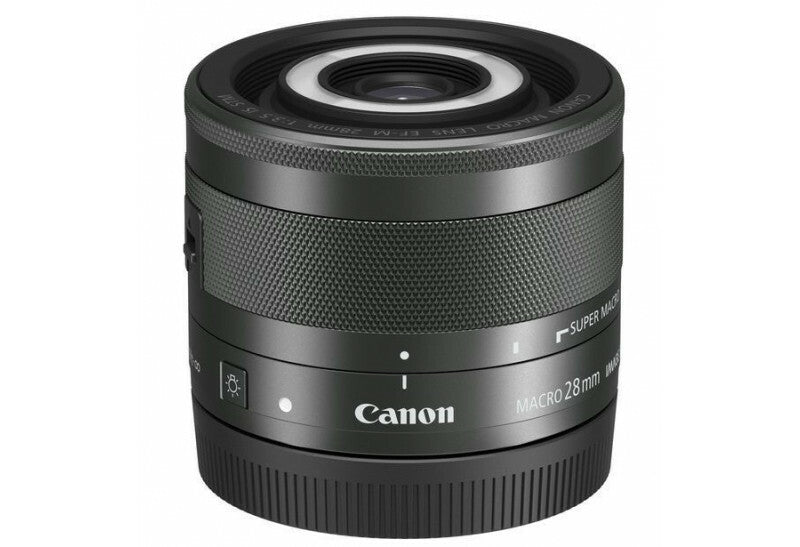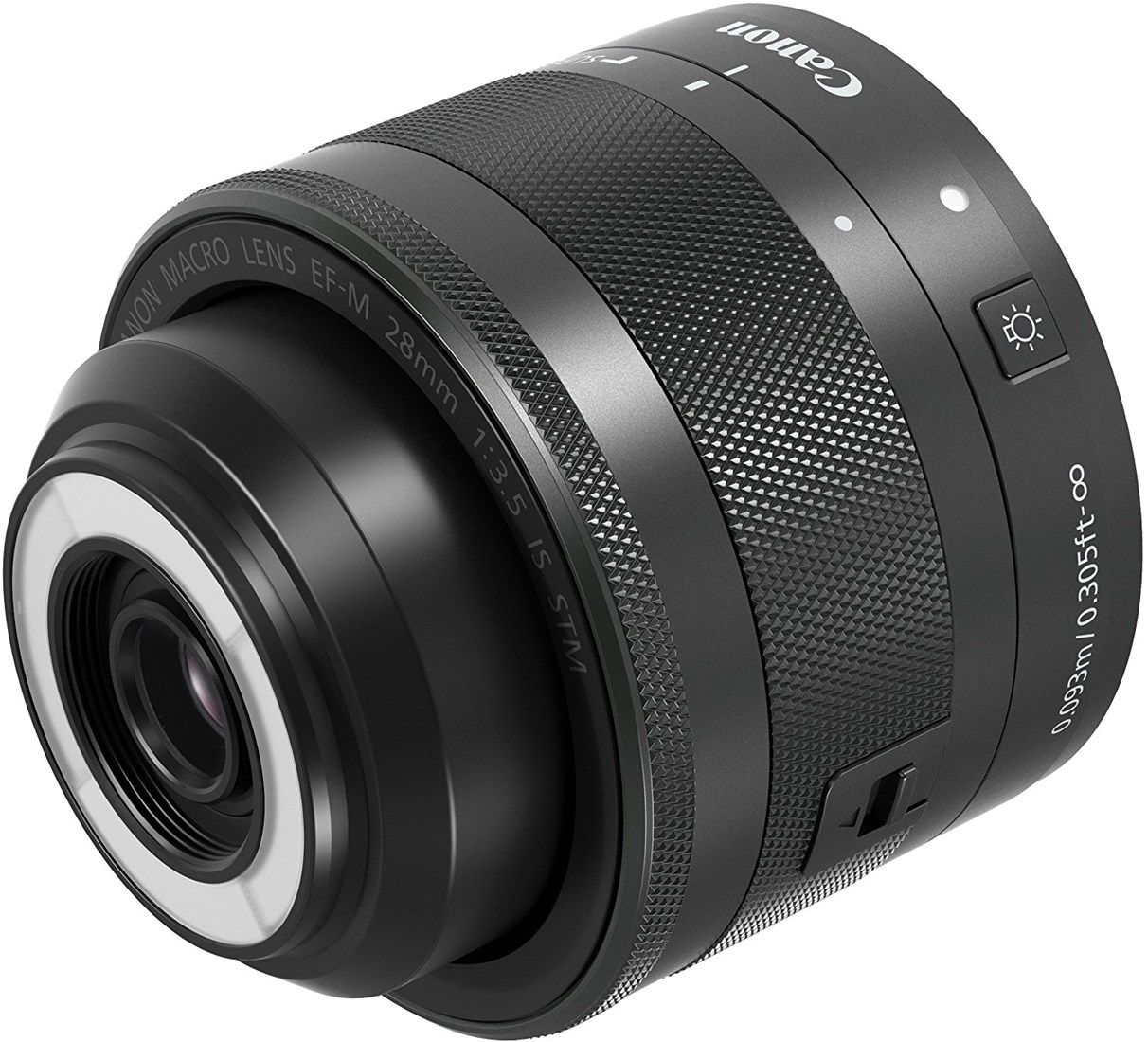Product Description
Canon EF-M 28mm f3.5 Macro IS STM Black Lens for EOS M
Enter the unique world of macro: Magnify the intricate details of your subjects with this innovative, compact macro lens for the Canons EOS M series. With the world's first autofocus lens with built-in Macro Lite, you can illuminate your subject. While outstanding 1.2 x magnification, means that you can now get closer than ever before.
The EF-M 28mm f/3.5 Macro IS STM is a great lens for:
-
Macro
Discover nature's little secrets. Magnifying texture and hidden detail in flowers, insects, fruit and liquids. -
Food
Do justice to glossy sauces, precision-cut sushi and the intricacies of fine cookery. Capture mouth-watering detail that you can almost taste. -
Travel
Travel photography is not just for globetrotters - get out and about. Sightseeing, lazy days and spur of the moment mini-breaks are all memories to treasure. -
Portrait
Perfect for capturing expressions on the faces of friends and family, ideal for weddings, events and parties.
Built in Macro Lite Technology
This EF-M series lens comes with two built-in, controllable, LED (Macro Lite). This feature provides extra illumination in front of the lens to remove unnecessary shadows, which can often be cast by you and your equipment when shooting macro photography.
Clever barrel design
So you can make the most of all available light, EF-M 28mm f/3.5 Macro IS STM is designed with a converging lens barrel, to minimise the shadow caused by the lens itself. This also provides surface contact points for steady shooting, so the lens can be used at a steep angle of 53 degrees from the surface on which the object is placed. The combination of the contact points and the use of the Macro Lite (when needed), allows you to capture detailed macro shots.
Get closer than ever before
The EF-M 28mm f/3.5 Macro IS STM has a true magnification ratio of 1:1, meaning the object you shoot appears life-size in your image. When you want to explore and magnify the finer details of your subject, you can engage Super Macro mode. With outstanding 1.2x magnification, you can enlarge your subject beyond life-size. Taking into consideration the crop factor of the EOS Ms APS-C sized sensor, which results in a 35mm equivalent shooting magnification of 1.92x, users can capture incredibly fine details like natural veins in plants, or the detailed construction of jewellery. Also in Super Macro mode, you can get incredibly close (a working distance of 13 mm) allowing you to explore tiny objects.
Pick up the finer details in motion
Create amazing close-ups by combining the macro capabilities of the EF-M 28mm f/3.5 Macro IS STM with EOS Ms video functionality.
Easy to carry
When on the move, the EF-M 28mm f/3.5 Macro IS STMs compact design, makes it perfect for documenting your day-to-day adventures. With precision optics and a lightweight (130 g), collapsible body, the lens is ideal for everyday photography, as well as macro.
Pin sharp images
Angular shake is much more pronounced in macro photography; because of this macro photography usually requires a steady tripod. However, the Hybrid Image Stabilizer in EF-M 28mm f/3.5 Macro IS STM is specifically designed to help minimize both angular and shift camera shake.
Create much more than macro
With features that are designed specifically for macro photography, this lens is also flexible enough for everyday photography uses. With a wide aperture of f/3.5 and a 35mm equivalent focal length of approx. 44.8mm (due to mirrorless cameras having cropped sensors), you can shoot with a natural angle of view and perspective for various snapshots.
Illuminate features
This day-to-day lens is also great for portrait photography, especially with the combination of a Hybrid Image Stabilizer and the wide 7-bladed circular aperture. You can easily achieve portrait shots that draw the eye to focus on the detail you want, with the subject separated from a beautifully smooth background. You can even use Macro Lite to add a spark to your subject's eyes.
For full specifications click Here

























